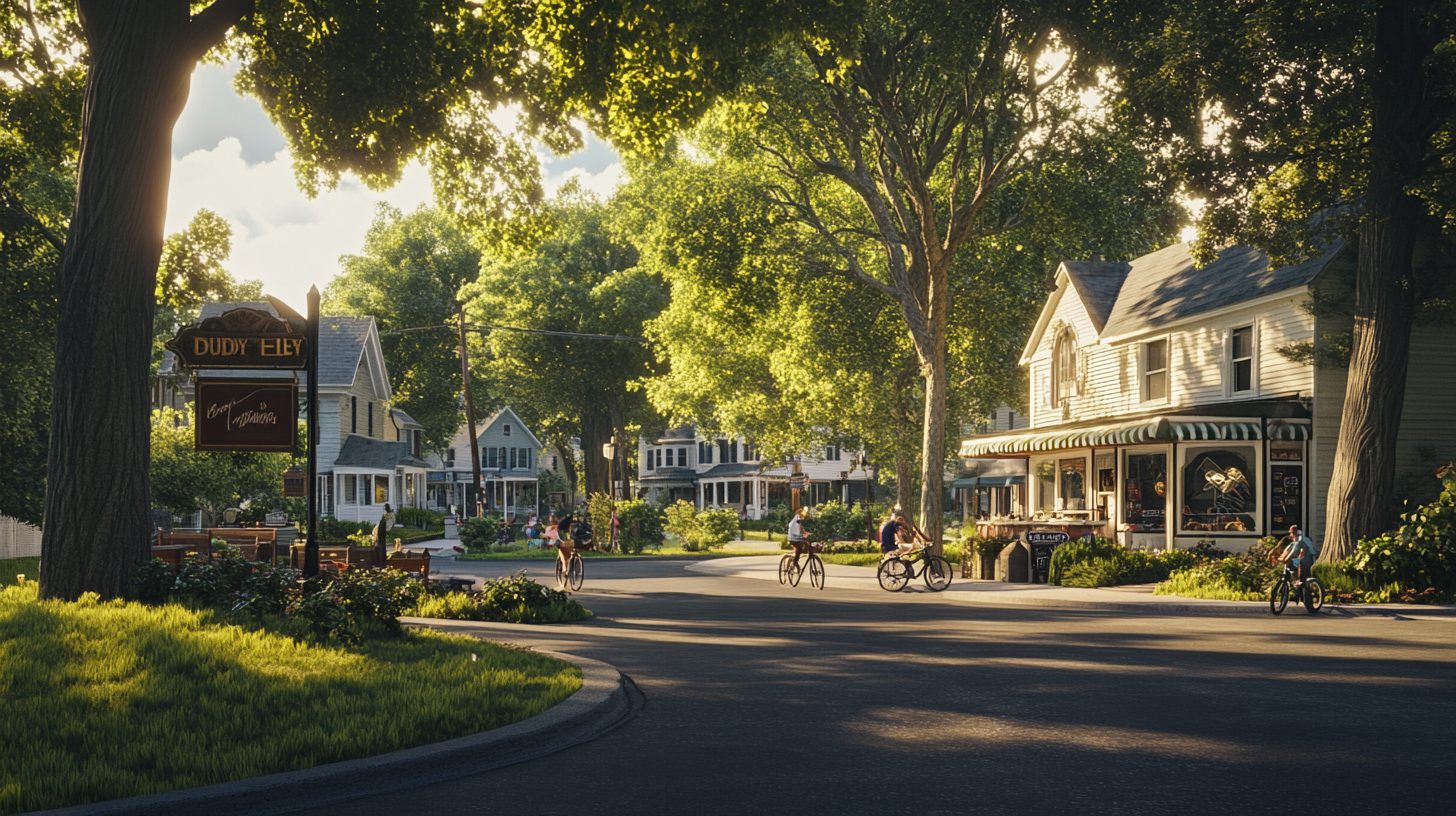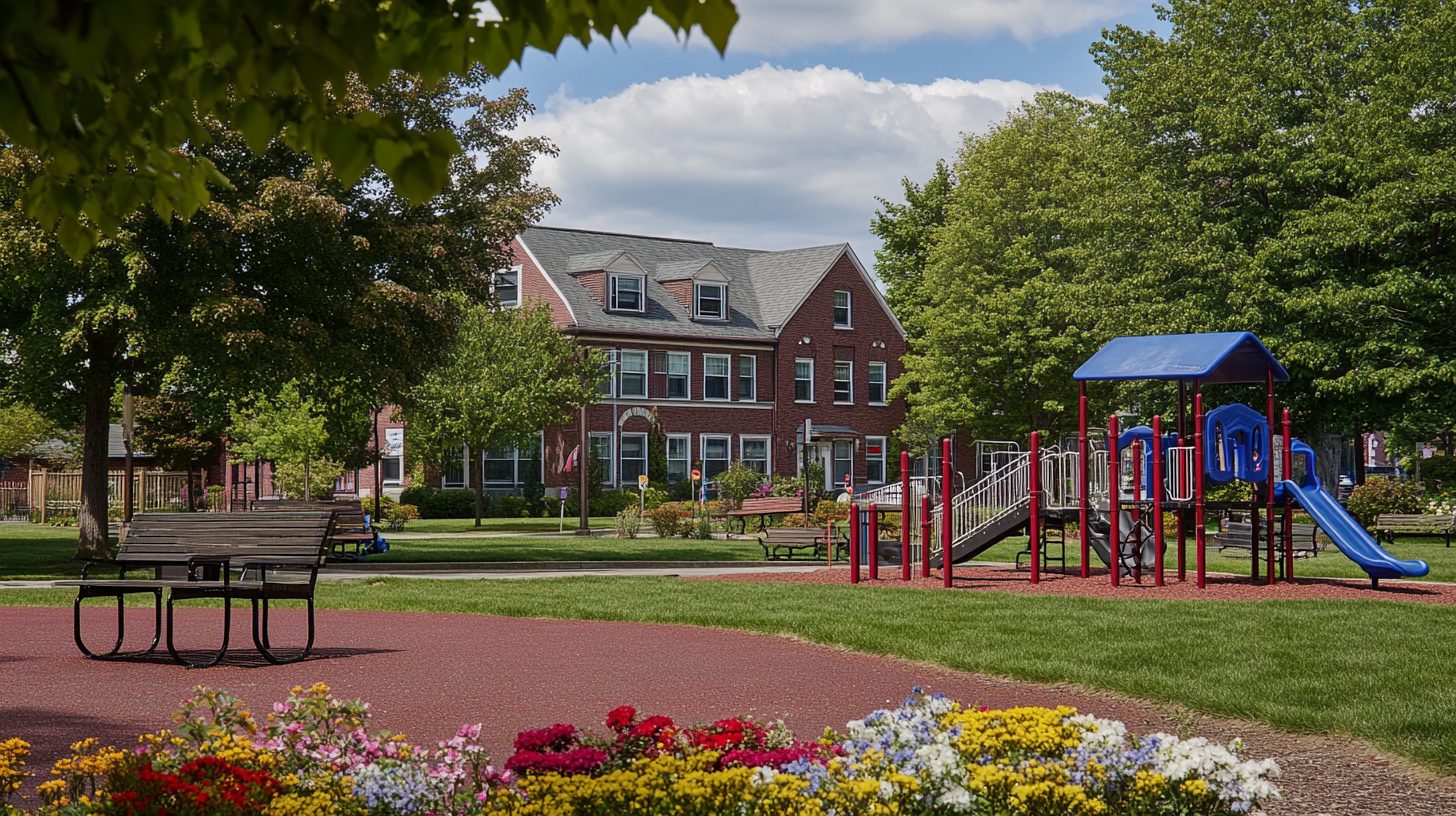You bought your place in Oxford, Massachusetts, and the honeymoon phase felt endless. Then life happened. Job offers pop up. Kids grow like weeds. Mortgage rates swing. Now you’re staring at Zillow at 1 a.m. whispering, “Is it time to list?”
Take a breath. We’re going to unpack exactly how long you should own a home before selling in Oxford. Not a national average cooked up somewhere in Chicago, but real intel that lines up with Central Massachusetts pavement.
Oxford, MA at a Glance (so you know the playing field)
Oxford is small-town New England with quick hops to Worcester and roughly an hour to Boston. Roughly 14,500 residents. Median household income around $89k. Single-family Colonials and split-levels rule most streets, yet you still catch the occasional late-1800s farmhouse that refuses to budge on charm.
Inventory? Tight. In most months we see barely two dozen active listings. That means competition the minute a “For Sale” sign goes up. Buyers roll in from Worcester, from Boston ex-urb seekers, from folks who work hybrid and only need that train into the city twice a week.
Mortgage rates at the start of 2025 cooled off from the 7 percent chaos of late 2023 but still flirt around 6.2. Translation: plenty of would-be buyers stay on the hunt yet anchor their budgets a bit lower to keep monthly payments sane.
All caught up? Good. Let’s tackle the big question.
The Short Answer Everyone Begs For
You will hear number after number: five years, seven years, ten years. The U-S average sit-tight period lands at about thirteen according to Redfin. Sounds neat. Unfortunately, averages don’t cash your check at closing.
If you want a bumper-sticker answer for Oxford, aim for seven to nine years of ownership before selling. That window typically:
- Lets you outrun the up-front costs of your mortgage
- Gives property values enough runway to rise higher than closing fees, commissions, and capital-gains thresholds
- Aligns with how often families in Worcester County report major life shifts like kids turning school-age or retirement whispers getting louder
Still, we both know real life wrecks neat averages. So let’s peel back each piece.
Factor One: Equity, That Sneaky Wealth Builder
A lot of new owners forget the first five years of a standard thirty-year fixed note mostly feeds interest. Equity builds slow, like maple sap in March. If you try flipping in year three, your proceeds risk getting devoured by:
- The 5 to 6 percent listing commission
- Attorney and recording fees
- Excise stamps in Massachusetts
- A brand-new set of closing costs on your next loan
To leave closing with money in your pocket rather than a sad handshake, most Oxford sellers wait until they have at least 15 percent equity. A quick way to eyeball that:
- Pull your latest mortgage balance.
- Check recent sold prices on streets similar to yours.
- Subtract about eight percent for all selling fees.
If the remaining stack of potential cash covers a healthy down payment on the next place plus moving expenses, you might be ready. If not, your home still needs more time in the financial crockpot.
Factor Two: Market Momentum
Real estate rides cycles. Oxford has enjoyed a near decade of appreciation above national pace, roughly 6.1 percent annually since 2015. Even so, there were two micro-cool-offs:
- Late 2018 when Fed hikes spooked buyers
- Autumn 2022 when rates rocketed over 7 percent
Owners who listed during those dips watched negotiated prices stall or, worse, sit. Owners who could wait twelve to eighteen months saw values bounce back. Timing matters.
For 2025 projections, multiple brokerages predict another 3 to 4 percent climb across Worcester County. Inventory remains choked, builders still chase permits, and millennial families keep graduating from apartments.
Rule of thumb many local pros use: if you bought before 2021, you’re probably sitting on at least 20 percent appreciation even after fees. Bought in 2022? Hang on a bit longer unless you have a must-move reason.
Factor Three: Capital Gains Tax (nobody’s favorite topic)
The IRS offers a sweet exemption if the home is your primary residence for two out of the last five years. Sell sooner and you risk a tax bill on every dollar of profit. In plain English: you usually want to cross that 24-month line.
A quick example to drive it home:
- You snagged a Cape on Charlton Street in June 2023 for $410k.
- A nurse recruiter calls, wants you in Portland, Maine, by spring 2025.
- Market value by then might be $450k. Sounds tasty, right?
- Fees plus potential capital gains turn that $40k spread into closer to $14k. Ouch.
Sticking it out until at least June 2025 protects most, if not all, of that gain. It also folds into that seven-to-nine-year Oxford sweet spot when you layer equity and market momentum.
Factor Four: Lifestyle Shifts That Trump Math
Sometimes the spreadsheet loses. Births, divorces, empty-nest syndrome, elder-care needs—each can shove you toward selling sooner. A few questions to gut-check yourself:
- Are you commuting over ninety minutes a day and slowly despising life?
- Have two kids already outgrown the smallest bedroom and started cage-match wrestling over closet space?
- Has your empty nest left you heating 2,600 square feet when you mostly lounge in the living room?
If a big “yes” bubbles up, the emotional cost of staying may outweigh another year of appreciation. Never forget: the house should serve your life, not chain it down.
Oxford 2025: What the Data Whispers
We combed through MLS PIN stats, Realtor.com forecasts, and mortgage application reports specific to Worcester County. Here is the skinny.
Inventory: expected to bump up eight to ten percent by late summer as rate locks from 2020 finally expire. More choice for move-up buyers.
Average days on market: about twenty-nine. That is still seller-friendly, though not the weekend frenzy of 2021.
Median sale-to-list ratio: 101 percent. Offers still crack over asking if the property sparkles.
Prime listing weeks: historically mid-April through Mother’s Day. Warm enough for curb appeal, still early before graduations distract everyone. Last year, homes listed between April 13-19 in Worcester County captured 7 percent more clicks and 1.3 additional offers compared to June listers.
What does that mean for you? If your personal clock says “Sell this year,” angle for early spring. Missed that window? Early September resets the stage once buyers return from the Cape.
A Quick Math-Check Worksheet
Grab a notepad, open your banking app, and run these numbers. Promise it takes less than five minutes.
- Current mortgage balance: __________
- Probable sale price today (peek at comps): __________
- Expected selling fees at eight percent: __________
- Net before mortgage payoff: line 2 minus line 3
- Projected cash at closing: line 4 minus line 1
If line 5 gives you a five-figure grin, the timing might be right. If it barely buys a used Subaru, hold off.
Repeat the same exercise imagining you wait two extra years with a three-percent annual appreciation. Numbers look juicier? Patience pays.
Common Oxford Seller Profiles and How Long They Wait
Move-up families
- Bought starter ranch 2016-2018 at roughly $260k
- Two kids now sharing a room the size of a walk-in closet
- Equity north of $140k
- Waiting period: seven to nine years total ownership, lining up with 2024-2026 listing dates
Empty nesters
- Bought 1999-2005, mortgage nearly gone
- House too big, lawn too steep
- Capital gains exemption resets every two years, but they already satisfy it
- Waiting period: determined less by years owned, more by health and maintenance fatigue
Work-from-homers discovering Vermont
- Bought 2020 during city exodus, values shot up twenty-two percent
- Remote job feels permanent, mountain life calls
- Waiting period: four to five years is enough thanks to huge equity gains, though they still dodge capital gains by hitting year two
Renovation ROI: Should You Upgrade First?
The Oxford market rewards turnkey. Buyers scroll right past 1990s oak cabinets. Even modest refreshes suddenly matter.
Where the payoffs lie:
- New roof if shingles show curling. Appraisers mark roofs quickly, buyers fear leaks.
- Refinished hardwood floors. Cost around $3.50 sq ft yet bumps perceived value.
- Swapping old laminate counters for mid-range quartz. Usually returns about 70 percent but speeds offers.
Fancy hot tubs, imported tile murals, or a second-story addition months before listing? Rarely wise. Keep things simple, neutral, clean. A property that photographs well under bright June sun can beat the comp down the street by ten grand with zero emotional strain.
If you plan serious upgrades, tack on at least twelve extra months of ownership to recoup materials and contractor bids.
Personal Experience Corner
I sold my own Oxford condo two springs ago. Bought in 2014 for $186k. Listed March 2023 at $309k after nine years. Minimal updates: fresh paint, swapped brass lights for matte black, replaced a tired shower door. We fielded five offers, closed at $328k. Net proceeds financed our down payment on a three-bed Colonial off Sutton Avenue.
Was that nine-year wait magic? Probably. Could I have sold in 2021 for nearly the same? Maybe, but the equity cushion felt safer with time. Use that story however you like but remember each path differs.
Quick Signs You Might Need to Sell Sooner
- You accepted a job requiring relocation and the company covers closing costs
- Your adjustable-rate mortgage resets next year and payments jump eight hundred bucks
- Health needs demand single-level living
- Divorce decree orders liquidation
When these pop up, the “ideal” timeline evaporates. Sell, settle, reset.
Quick Signs You Should Wait
- Negative equity still hangs around from a high-leverage purchase in 2022
- Your roof, HVAC, and septic all turn fifteen this year. Replace them first or buyers will demand concessions
- You switched careers and need two straight years of W-2s to qualify for the next mortgage
- Market comparables show recent list-price cuts in your style of house
Putting It All Together: The Seven-Layer Checklist
- Own the place at least two years to bypass capital gains
- Stack 15 percent equity, though 20 feels better
- Watch for low inventory readings below two months supply
- List in mid-April or early September for eyeball traffic
- Budget eight percent off top for fees so the payout still excites you
- Update visible wear without going HGTV crazy
- Sleep on the lifestyle question one more night. Happy or itching to bolt?
Hit roughly five of those seven and Oxford is probably ready to hand you a tidy envelope at closing.
Ready To Make A Change?
There is no cosmic stopwatch that pings, “Nine years, flip now.” The perfect-on-paper selling timeline blends market data with your soul’s to-do list. In Oxford, the math often gels between year seven and year nine, yet you hold the final vote.
Run the numbers. Glance at your calendar. Ask if your home still fits the life you want next. Then—only then—call a trusted local agent who knows Route 12 from Route 56 without GPS. You’ll stride into that first listing meeting armed with clarity instead of questions.
When you are ready, the market is listening.













